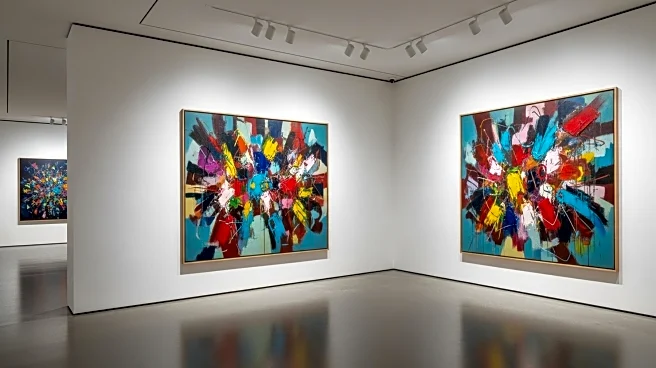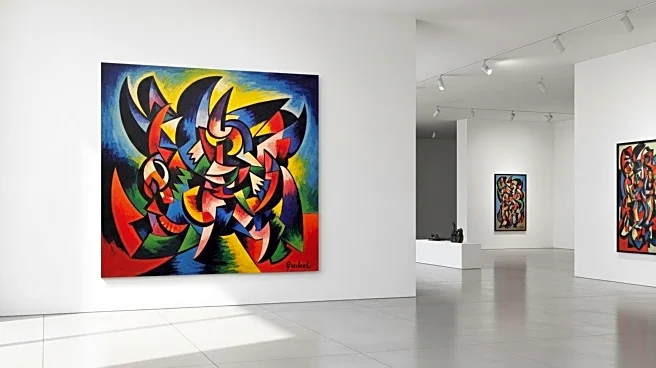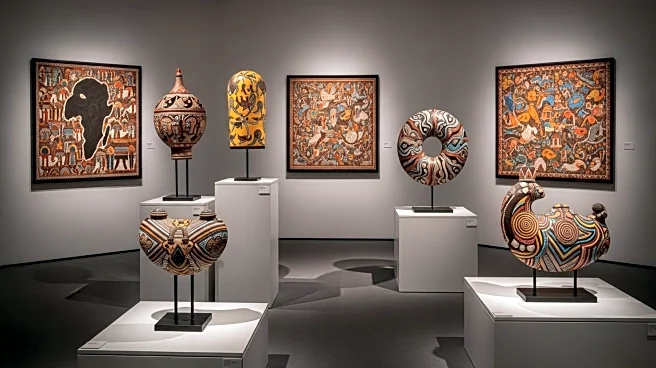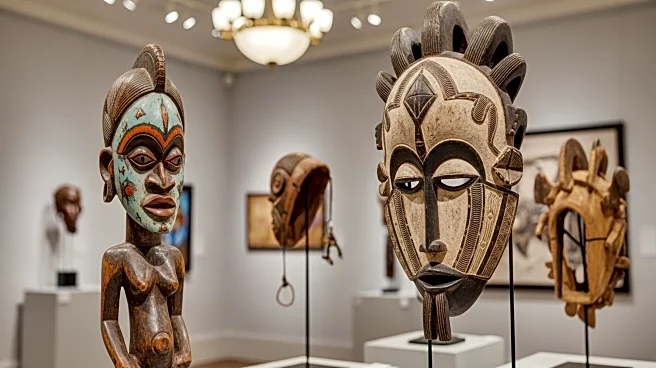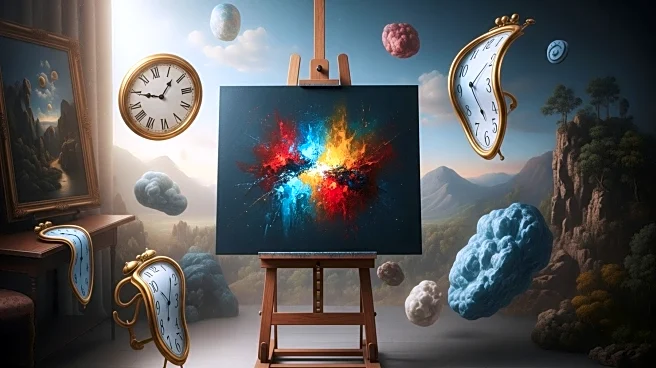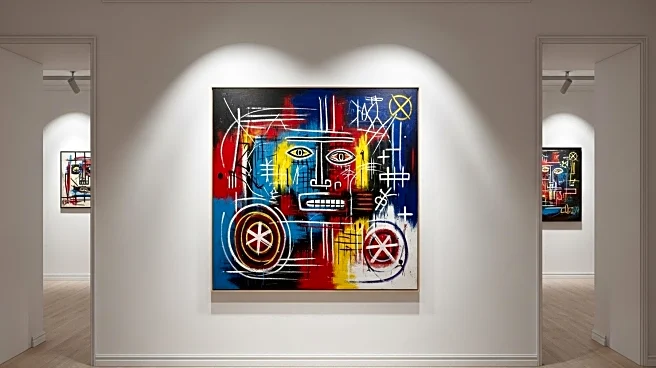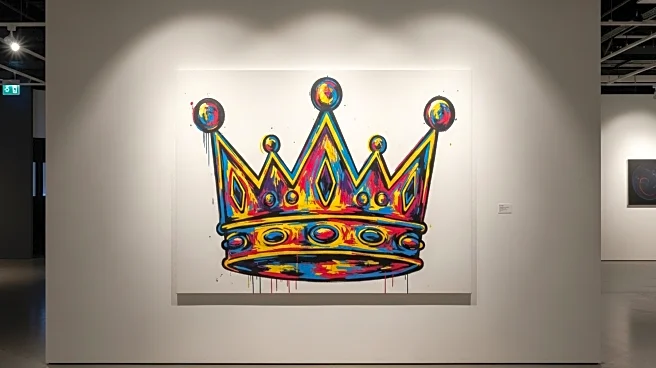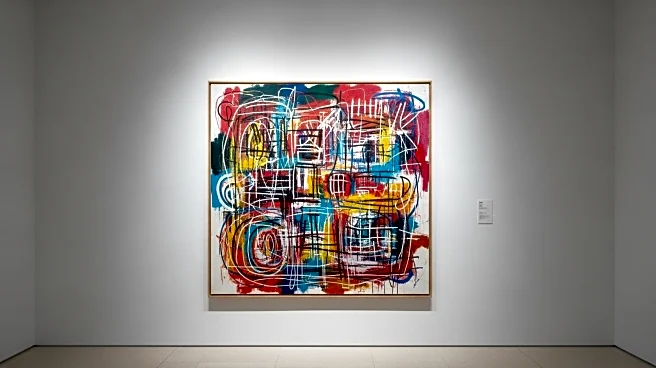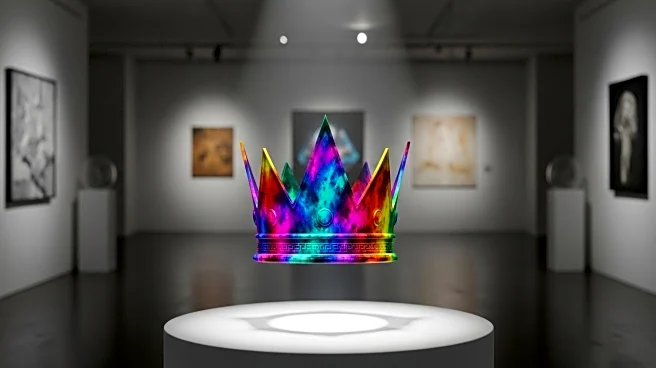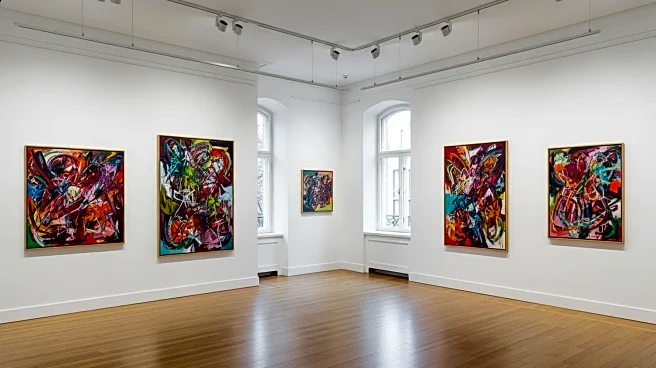What is the story about?
What's Happening?
Sanya Kantarovsky, a renowned painter known for his folkloric and darkly humorous works, has opened a new artist-run space named Ronadale in Craryville, New York. The space is designed to support challenging and less-commercial art forms such as sculpture and performance. Kantarovsky aims to fill a void left by the closure of similar spaces and does not intend to profit from this venture. The first exhibition features works by Chadwick Rantanen and Hélène Fauquet, focusing on sculptures that engage viewers in a dialogue outside commercial contexts. Kantarovsky built the space himself, emphasizing a commitment to fostering art that requires deep thinking.
Why It's Important?
The opening of Ronadale highlights a significant shift in the art world, where commercial viability often overshadows cultural value. Kantarovsky's initiative challenges this trend by prioritizing artistic integrity over profit. This move could inspire other artists to create spaces that support innovative and experimental art, potentially reshaping the landscape of art exhibitions. It underscores the growing need for venues that prioritize artistic expression and cultural dialogue, offering a platform for artists whose work may not fit into traditional commercial galleries.
What's Next?
Ronadale plans to host one exhibition per year, focusing on collaborations between artists that foster meaningful conversations. Kantarovsky is exploring possibilities for concerts and performances, aiming to create a unique experience for art enthusiasts. The space's programming will continue to evolve, potentially influencing other artists and galleries to adopt similar models. As Ronadale gains recognition, it may attract attention from art critics and collectors interested in supporting non-commercial art.
Beyond the Headlines
Kantarovsky's approach raises questions about the sustainability of artist-run spaces in a market-driven art world. It challenges the notion that art must be commercially viable to be valuable, potentially sparking discussions on the ethical dimensions of art curation and sales. This initiative could lead to a reevaluation of how art is valued and supported, encouraging a broader understanding of cultural significance beyond monetary metrics.
AI Generated Content
Do you find this article useful?
